Top 10 Prioritization Frameworks
It may be argued that the key function of Product Management, is prioritization. For instance, you set the product vision, direction, and strategy in the roadmap so that they guide what is most important to do.
However, prioritization isn’t the easiest of things PMs have to do. It isn’t just about deciding a sequence of features to work on but also about taking into consideration (often conflicting) demands by stakeholders, diplomacy, and alignment. You might, therefore, find that it’s easier to miss the mark than get it right. Thankfully, many frameworks are available to make this a lot easier. Let’s consider some of the most popular ones out there.
1. Weighted Scoring
Also known as Benefit vs. Cost, this framework prioritizes features or initiatives based on shared cost-benefit criteria. Your team identifies the scoring criteria and split them under benefits and costs. You also assign a weight from 0 to 100% to each driver in terms of their importance to the final prioritization score. Going through all features, assign a score between 1 and 100 for every driver. A higher score indicates the higher bearing a feature has on a driver.
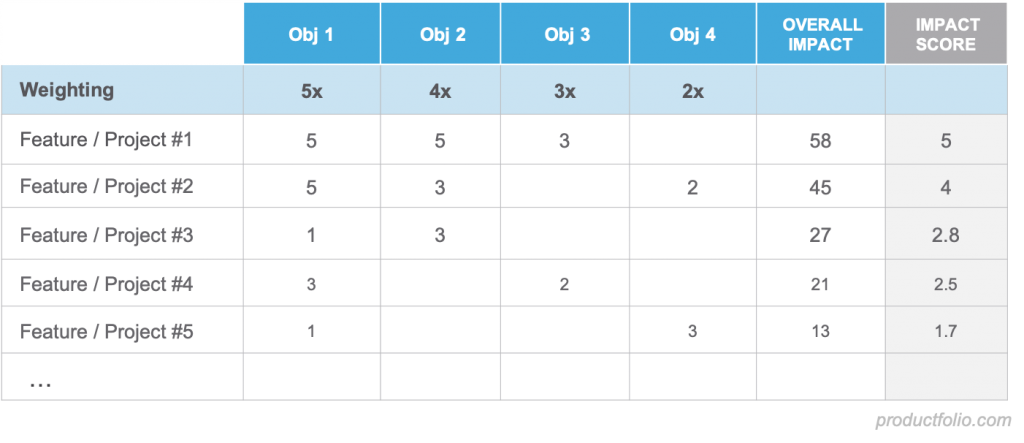
Read more about Weighted Scoring→
2. Value vs. Complexity
The popularity of this framework probably has to do with its simplicity. Also known as Impact vs. Effort, it is a 2×2 grid that bases prioritization on the value of an initiative or action relative to the difficulty of implementing it. You plot “value” (upon your goals) against “Complexity” for a matrix with four quadrants. Then you arrange initiatives in it according to their value and complexity scores.
Initiatives in the top half of the matrix are given higher priority, especially those in the top-left section (Quick Wins). Those in the bottom half are prioritized lower, with the ones in the bottom-right (Time Sinks) better left undone.
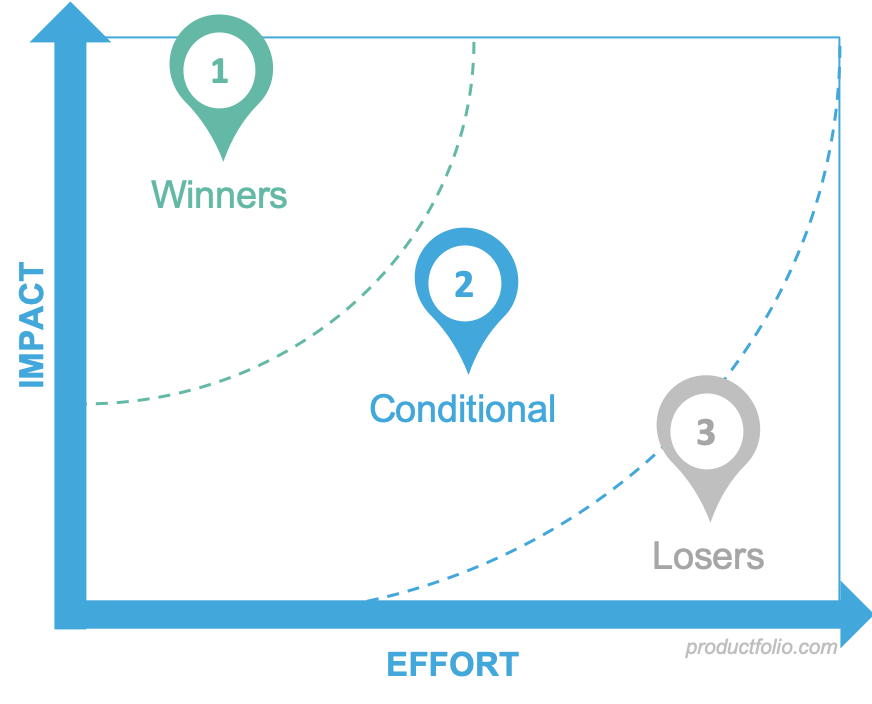
Read more about value vs effort→
3. MoSCoW Method
This prioritization technique gets its name from the following:
- Must have
- Should have
- Could have
- Won’t have
The name “MoSCoW” comes from combining the first letters of these categories, with the Os added only for memorability. What this framework, which was developed by Oracle’s Dai Clegg, does is classify features according to what stakeholders, including customers, deem as vital.
The “Must-haves” are features that must be present for a product to be considered useful. “Should-haves” are important for the success of a product but may not be made available at launch. Think of “Could-haves” as nice-to-have features you can implement if you have enough extra resources to do so. “Won’t have” items are the least-critical and lowest-prioritized due to negligible value to both the business and customers.
It must be stated, however, that what seems like a “Won’t have” item today may transition into any of the other categories with time.

Read more about MoSCoW Prioritization→
4. Story Mapping
With this framework, the attempt is at grasping how user stories can help to enhance the overall experience. Story Mapping puts a high premium on user experience rather than what other stakeholders think.
A board or wall is used to provide a visual walkthrough of how users interact with the product. You show the user’s journey (steps taken) while using your product on the horizontal axis. Next, add user stories or tasks vertically below the steps from top to bottom in the order of priority.
With Story Mapping, you can quickly know high-priority user stories and determine the minimum viable product (MVP).
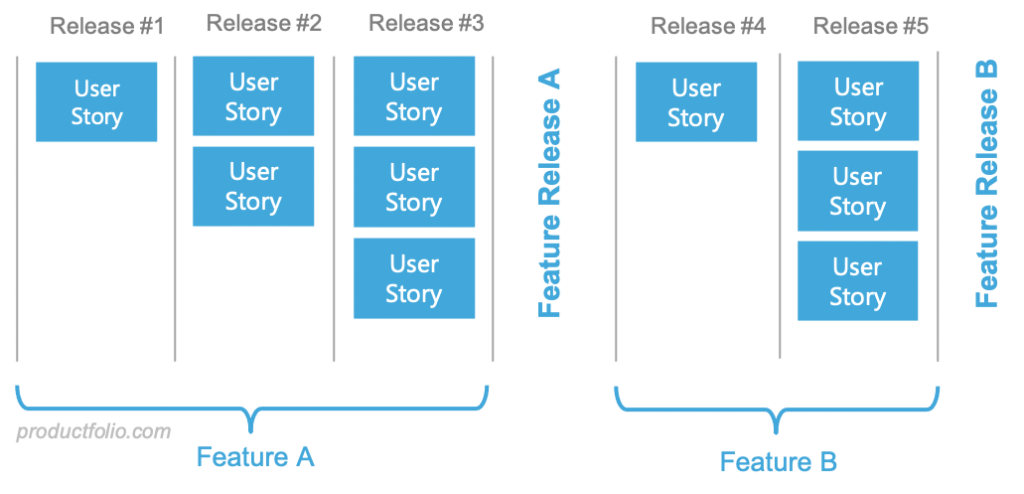
Read more about Story Mapping→
5. Kano Model
Here’s a helpful technique to consider when what matters to you most is developing a product that delights your customers. The Kano model prioritizes initiatives in line with how likely they are to please users. It implies that Customer Satisfaction is a factor of Functionality.
Customer Satisfaction (also called Delight or Excitement) is plotted along the vertical axis. Functionality (Achievement or Implementation) – that is, how well a feature is implemented – goes on the horizontal axis. The framework creates the following categories of features:
- Basic or must-have features
- Performance features
- Excitement features (Delighters)
- Indifferent features
Higher priorities are given to tasks providing high delights and that are easier to execute.
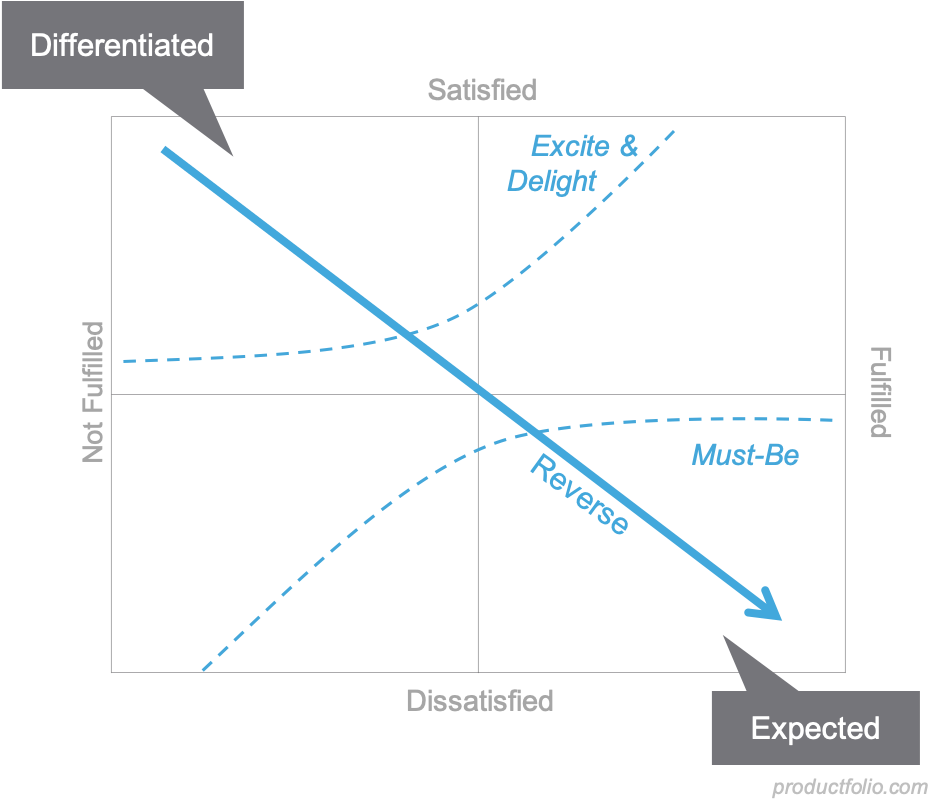
Read more about Kano Model→
6. ICE Scoring
This simple model is perfect when speed is needed. It lets you prioritize initiatives by assigning them scores based on Impact, Confidence, and Ease (ICE).
If you’re not very experienced in prioritizing initiatives, this may be an ideal framework to start with. It will especially be helpful if you’re trying to come up with a minimum viable product (MVP) in less time.
For each initiative, you assign impact, confidence, and ease scores – usually from 1 to 10. The average of the scores is your ICE score, which you will use to rank initiatives. It is advised that you explain what the scores for each factor imply to reduce inconsistency in evaluations.
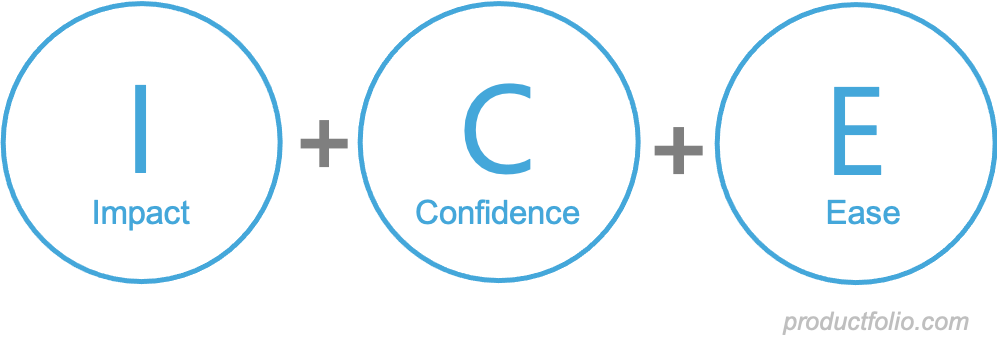
Read more about ICE Prioritization→
7. RICE
You may think of this framework as an improved version of the ICE Scoring model. Unlike the latter, RICE ranks features or initiatives based on four factors:
- Reach
- Impact
- Confidence
- Effort
Originally created by Intercom, this framework takes into account how many people an initiative will impact in a given time (reach) and how much they will be impacted. It also considers how confident you are about assigned your Reach and Impact scores plus how much effort or time it will require to complete the initiative.
To get your RICE score, you multiply Reach, Impact, and Confidence together and divide by Effort. Impact may be measured on a scale of 0.25 or 0.5 to 3 (low to high). Confidence score is a percentage value while Effort is measured in persons per month or “person-months.”
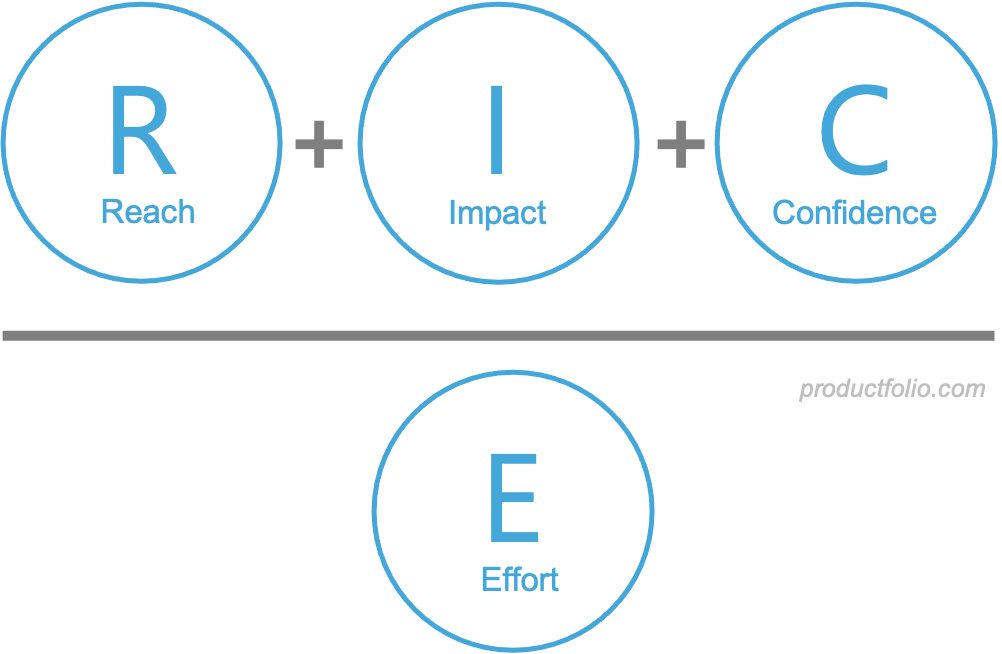
Read more about RICE Prioritization→
8. Opportunity Scoring
Derived from the ODI concept by Anthony Ulwick, this framework ranks initiatives based on satisfaction and importance. The idea is that customers purchase products or services to get certain tasks done. Opportunity scoring, also known as the opportunity or gap analysis, lets you identify what customers consider important but are not satisfied with.
After identifying features or ideal outcomes, you ask customers to score them from 1 to 10 based on these questions:
- How important is this feature or outcome?
- How satisfied are you with existing solutions?
You then proceed to plot responses on a chart to see the best opportunities. Your focus should be more on those outcomes that have the highest importance scores and lowest satisfaction scores.
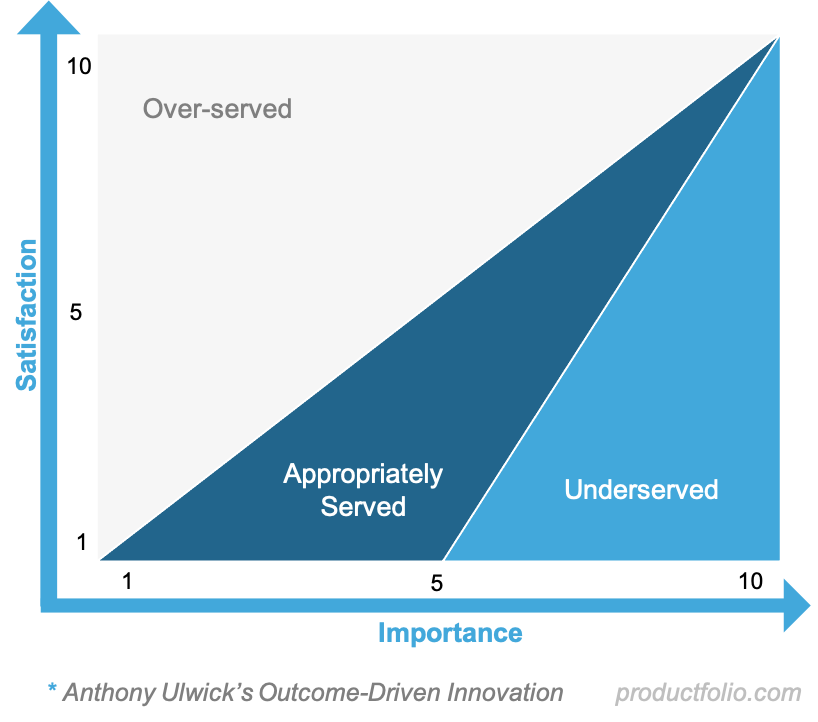
9. Product Tree
When it comes to promoting customer satisfaction, this prioritization framework is highly rated. It may not be as popular as some others on this list but it excels in ensuring user happiness. This is because it helps to drive the product in tandem with customer outcomes that offer the most value to the business.
The team starts by drawing a tree with some branches. Its parts represent the following:
- Roots – Infrastructure
- Trunk – Core functionality or features already present
- Branches – Primary product functions or products
The leaves are potential features. These are sticky notes on which customers or participants write these features. Those who write them are asked to place them on a branch. Talking about the branches, the outmost depict features that will come in the next release while the others hold features that could come later.
10. Buy a Feature
If by any chance you desire to make prioritization a more exciting affair, this framework is among those to check out. It takes the form of a game involving customers and/or other stakeholders.
The process starts by creating a list of features, ideas, or competing actions and then adding prices, based on resources needed to execute them. Next, you give a small group of participants a fixed, imaginary sum of money to spend on features that they love.
Some participants may exhaust their money on a single feature. Others might spend it on several features. Find out the reasons behind observed spending patterns. You prioritized features based on how much money participants, especially customers, were prepared to expend on them.
Read more about buy a feature→